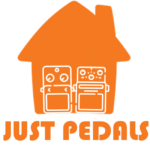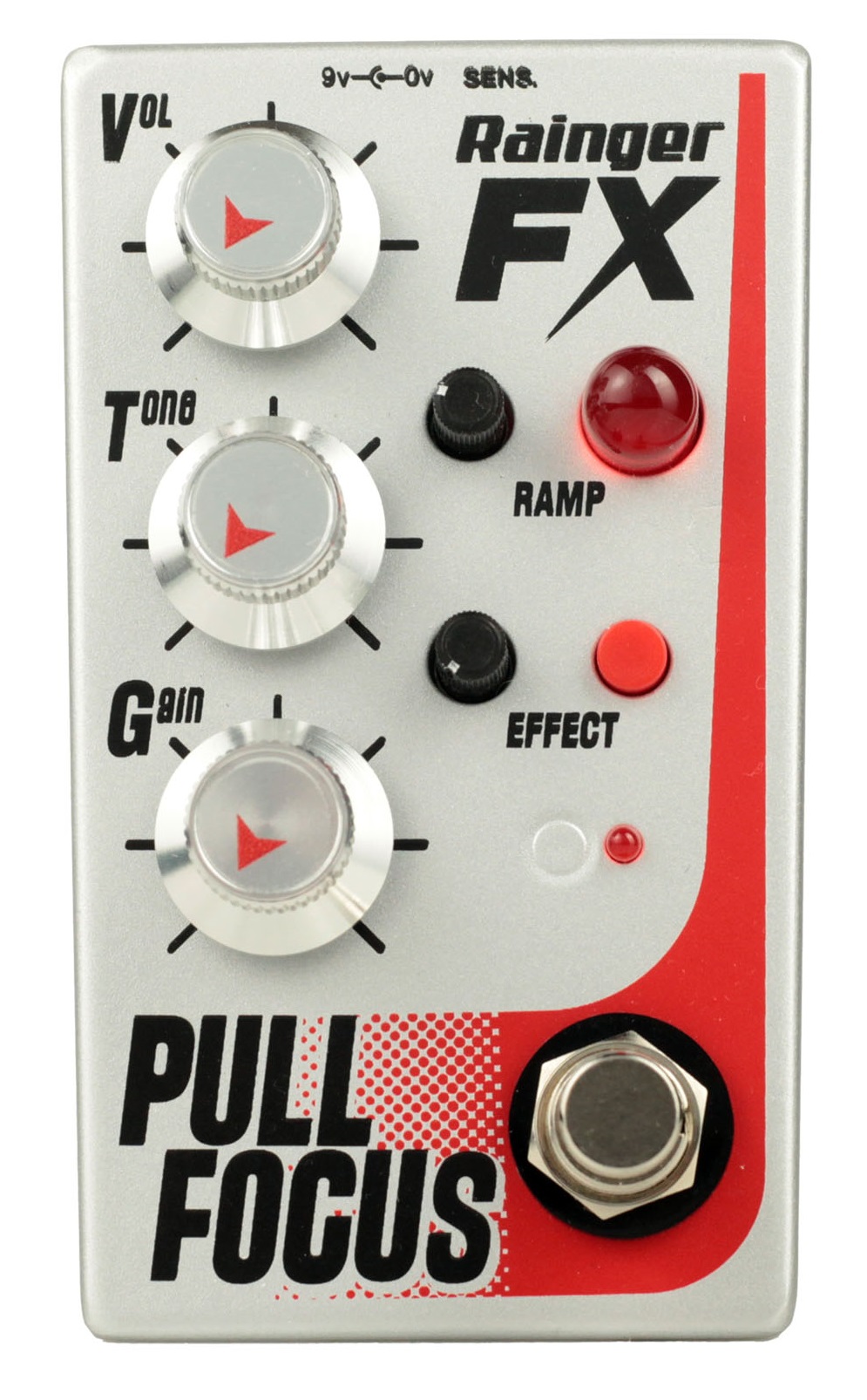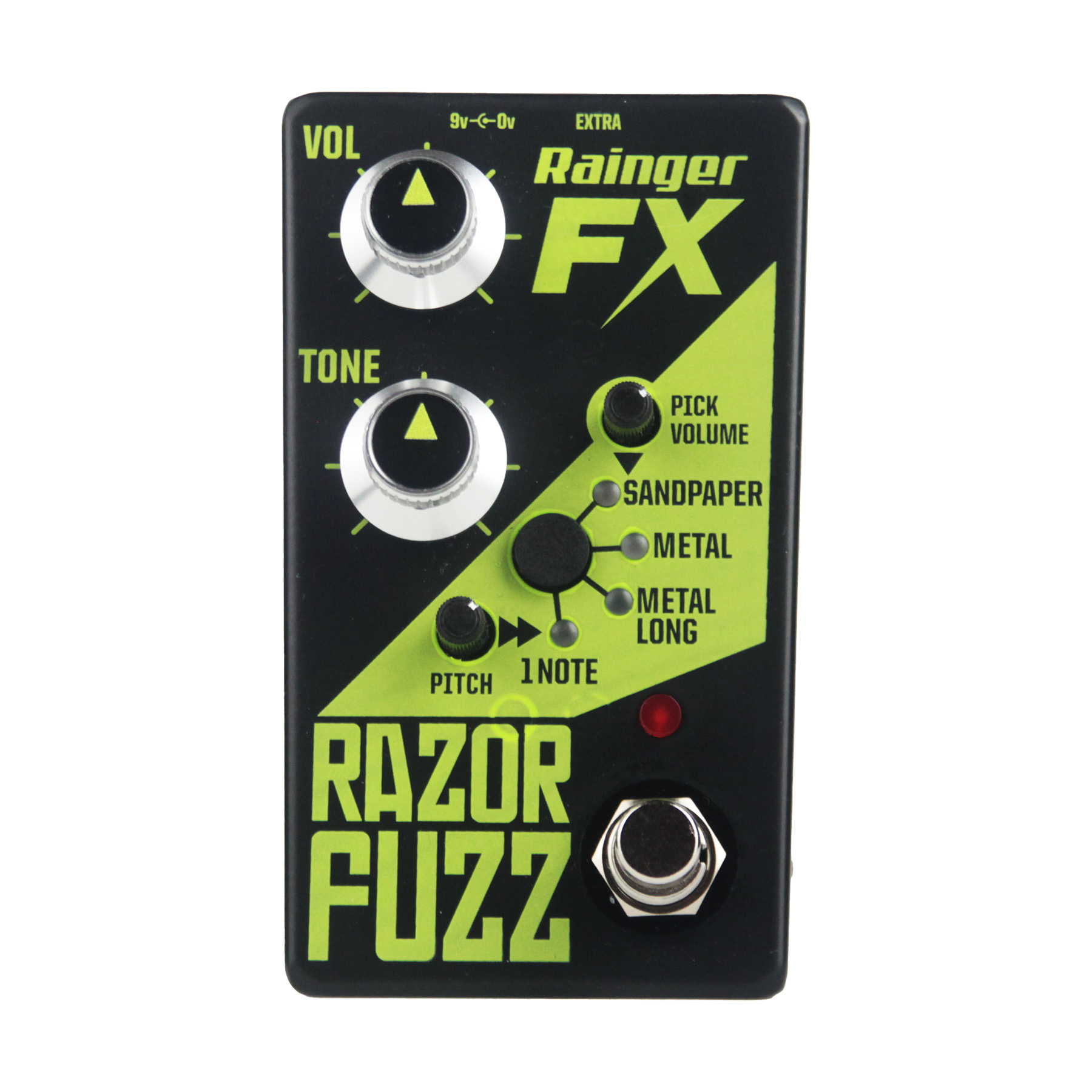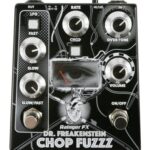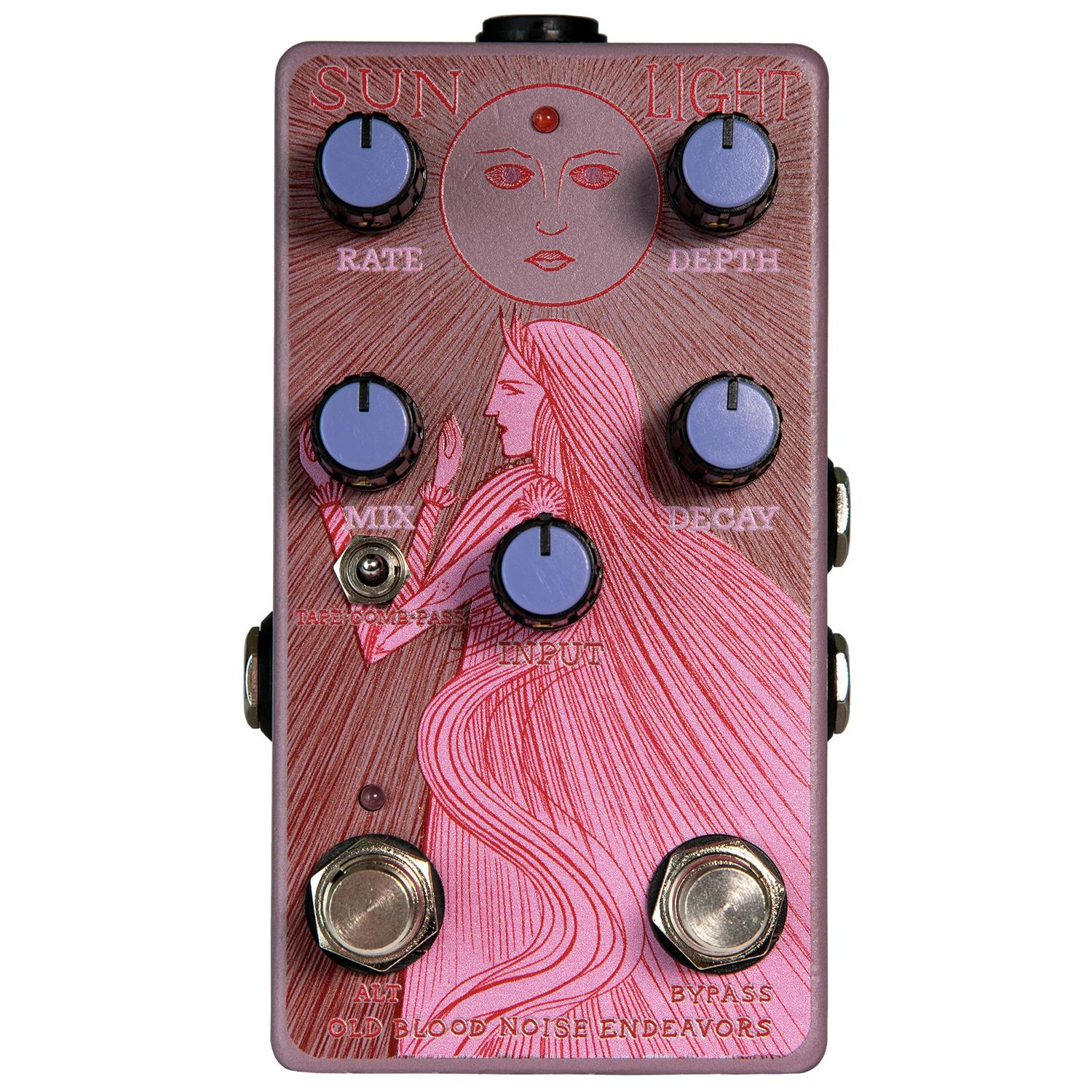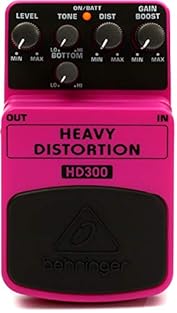Tasty Pedals made by Rainger FX
Rainger FX make inventive, quirky pedals that stand out both sonically and visually. Their designs push beyond traditional effects, offering everything from experimental distortions to dynamic filters and interactive noise-makers, often with unique features like external controllers or built-in LEDs. Bold, creative, and full of character, Rainger FX pedals are perfect for players who want unconventional tones and a playful, modern twist on the classic stompbox format.
Just Pedal Ingredients.
Chorus — A chorus pedal works by splitting your signal, slightly delaying one part and modulating its pitch before blending it back with the original. The result is a rich, shimmering tone that feels wide and fluid, almost as if several guitars are playing together in unison. It’s an effect that can add life and movement to your playing, making clean tones sound lush and dreamy or adding a subtle shimmer to warm overdrive.
From the classic 80s shimmer heard on countless records to modern ambient textures, the chorus effect remains timeless. Whether you want a gentle swirl for rhythm parts or a deep, detuned wash for atmospheric soundscapes, a good chorus pedal brings space and dimension to your tone. It’s a staple on many pedalboards for its ability to transform even the simplest chords into something spacious and expressive.
. Distortion — Distortion pedals take your clean guitar signal and transform it into something bigger, bolder, and full of attitude. By clipping the waveform, they add sustain, bite, and aggression, creating that thick, compressed tone that’s powered rock music for decades. From the growling crunch of classic hard rock to the tight, saturated roar of modern metal, distortion is all about energy and presence. It gives every note weight and authority, pushing your amp to its limits and beyond.
There are countless flavours of distortion, each with its own texture and edge. Some sound smooth and creamy, others raw and gnarly like tearing fabric. It’s the sonic equivalent of turning up the heat until the sound cooks — rich, sizzling, and perfectly seasoned to taste. Whether used for rhythm muscle or soaring leads, a good distortion pedal doesn’t just add volume; it adds personality, grit, and that unmistakable sense of power under your fingers.. Dynamic. Reverb — A reverb pedal is like the rich sauce that ties every flavour on the plate into one smooth experience. It adds depth, warmth, and atmosphere — the sonic equivalent of a perfectly reduced glaze that lingers on the tongue. Whether you’re after the subtle ambience of a cosy café (spring or plate reverb) or the grand echoes of a cathedral (hall or shimmer reverb), this is where your tone breathes and expands. A touch of reverb can turn a dry sound into something lush and inviting — but pour on too much, and it’s all you can taste. Used with finesse, it’s the finishing touch that transforms your tone from plain to unforgettable..
